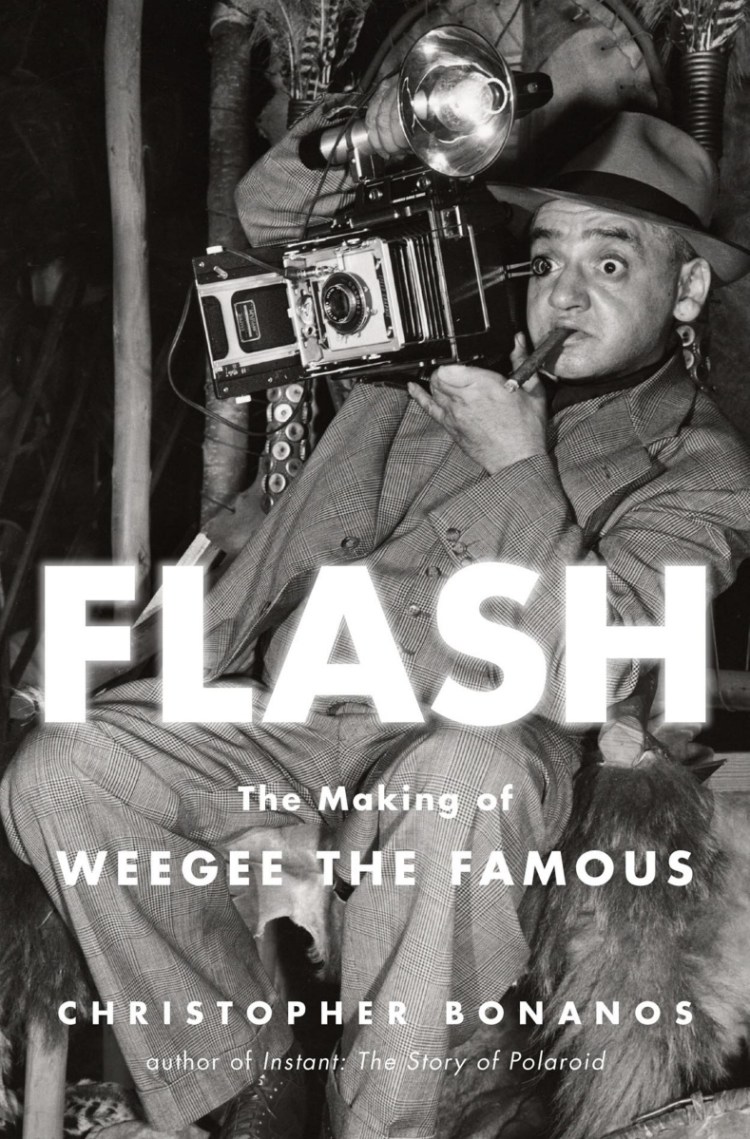Even if you don’t recognize the name Arthur Fellig, you know his work. Better known as Weegee, the seminal street photographer became famous in the 1930s for a series of vivid tabloid photos depicting murder victims, fires, car crashes and other lurid urban scenes. The prototype of the shabby, hard-living, fast-talking press photographer, Weegee receives a warm and sympathetic treatment in “Flash: The Making of Weegee the Famous,” an outstanding biography by New York magazine staff editor Christopher Bonanos.
A classic example of the Jewish shtetl immigrant made good, Weegee was born in 1899 in what is now Ukraine and grew up in the rough-and-tumble tenements of the Lower East Side. He served a grueling but invaluable apprenticeship as a printer and dogsbody in the bowels of the wire-service office of Acme, a photo agency that served the churning needs of nine daily New York City newspapers.
In 1935 Weegee rented an apartment across from police headquarters – the room “cost him seventeen dollars a month, and it was a dump,” Bonanos reports – and struck out on his own. Thus began a largely nocturnal life of speeding to crime and accident scenes in a rumpled slept-in suit, cigar and big Speed Graphic camera in hand.
On the night of July 31, 1936, Weegee managed to hustle up a photograph of a clean-cut pair of teenagers being taken into police custody … for the axe murder of the girl’s mother. Later that week, a visit to a weedy Brooklyn back lot provided a shot of a dismembered body in an old-fashioned steamer trunk: a shockingly macabre photograph. (In the days of Roosevelt and LaGuardia, stomachs were stronger.)
The very next night, he scored with a now-famous shot of gangster Dominick Didato sprawled out dead on a Little Italy sidewalk. One week, three front-page stories; Weegee’s career was off like a rocket.
Over the course of the next decade, he made some of the most recognizable images in the history of American photography, noir tableaux of fedora-sporting mobsters, immigrant kids sleeping on fire escapes, a pair of bejewelled opera-going women being given the fish-eye by un unruly bystander – a catalog of urban archetypes.
A canny student of his craft, his central idea, as he described it, was to “make the camera human,” an aesthetic he realized with the simple but profound tactic of turning the lens onto his fellow witnesses. In doing so, he revolutionized the on-the-scene press photo, endowing it with a hitherto unsuspected level of psychological depth.
Bonanos is a peerless guide to Weegee’s career, writing with obvious relish and great insight into both Weegee’s practice and into the wider context of the free-wheeling Depression-era city. New York in the 1930s was often grim and violent, but it also had a jaunty flamboyance that was perfectly mirrored by Weegee’s pedal-to-the-metal style and restless energy.
The biggest challenge a biographer of Weegee faces is how to treat the long anticline of his career; Bonanos admits that Weegee made no great photos in his signature style after 1945. What he did instead was both a radical innovation and an artistic dead end.
Always an inventive technician, Weegee began using special lenses and darkroom manipulation to make what Bonanos calls “distortions” – garish trick photos that have a comic brashness but that remain unserious gimmicks.
He also spent time in California and Europe, married and divorced, gave lectures, published books, contributed some queasy shots to third-tier girlie magazines and got involved in C-movie efforts such as “My Bare Lady,” all of which Bonanos documents with nuance and humor.
“Flash” is a superior work of biography, largely because Bonanos is clear-eyed about his subject’s less attractive traits – his lechery, misogyny and free-and-easy way with the truth – while conveying affection for the man’s brio and essential sweetness. (Weegee titled a particularly wrenching photo of a grieving mother at a deadly tenement fire “I Cried When I Made This Picture,” which Bonanos calls “a believable claim.”)
On the tricky question of Weegee’s artistic legacy, Bonanos is smart and perceptive, if understandably partisan. It is a stretch, perhaps, to say that Weegee was “postmodern before we had that word,” but Bonanos nails it when he observes that “his best pictures are intensely truthful.”
In a sense, every famous American news image you can think of – the flag being raised on Iwo Jima, the girl running down the road in Vietnam – treads the path Weegee forged. Others may have done it better, but he did it first.
Send questions/comments to the editors.



Success. Please wait for the page to reload. If the page does not reload within 5 seconds, please refresh the page.
Enter your email and password to access comments.
Hi, to comment on stories you must . This profile is in addition to your subscription and website login.
Already have a commenting profile? .
Invalid username/password.
Please check your email to confirm and complete your registration.
Only subscribers are eligible to post comments. Please subscribe or login first for digital access. Here’s why.
Use the form below to reset your password. When you've submitted your account email, we will send an email with a reset code.